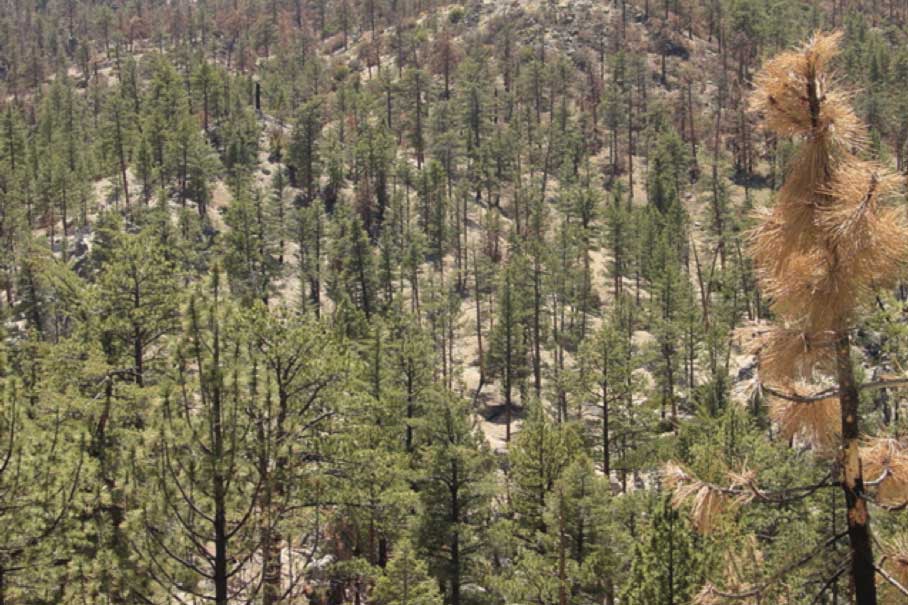A Colorado State University researcher collaborated with west coast fire scientists and ecologists on a new study about California’s current bark beetle epidemic and its possible effects on future fire behavior in the state.
Being part of this particular research team was very familiar to Associate Professor Chad Hoffman – similar situation but different location. He has already seen the effects of forested landscapes impacted by beetle epidemics across the Rocky Mountains.
“Bark beetle outbreaks in many Rocky Mountain ecosystems have largely completed their cycle, but in California, it’s ongoing.” Hoffman said. “California is currently where Colorado was 10 years ago.”
The study, recently published in the journal Bioscience, addresses the need to make California’s drought-ridden forests more resilient to mass disturbances such as bark beetle and wildfire. Hoffman has spent much of his early career understanding how beetle outbreaks have influenced wildfire fuels and behavior in a number of different areas in other western mountain ranges.
His modeling research has found that the intensity and timing of tree mortality during these kinds of beetle outbreaks influences future fire behavior. For example, an area may experience 80% tree mortality in a single season, whereas another area may experience that same 80% mortality over a decade. If fire swept through six years after the initial outbreak, each area would exhibit different fire behavior.
“Part of our discussions on this research team were about translating and providing context from what we’ve learned in the Intermountain West, and how it can be applied to what we’re now seeing in the Sierra Nevada range,” said Hoffman. “California is comprised of very different ecosystems and beetle species, so it’s unfolding differently.”
One of the primary differences is that beetles in California are targeting drier forest types dominated by ponderosa pine trees. The article states that research on these forest types has been limited. Hoffman is expanding into this new niche by collaborating on yet another new publication in the journal Fire Ecology that seeks to understand factors controlling fire severity and disturbance interactions in ponderosa pine forests.
Whether looking ahead or in hindsight following disturbances in western U.S. forests, the research questions are plentiful.


